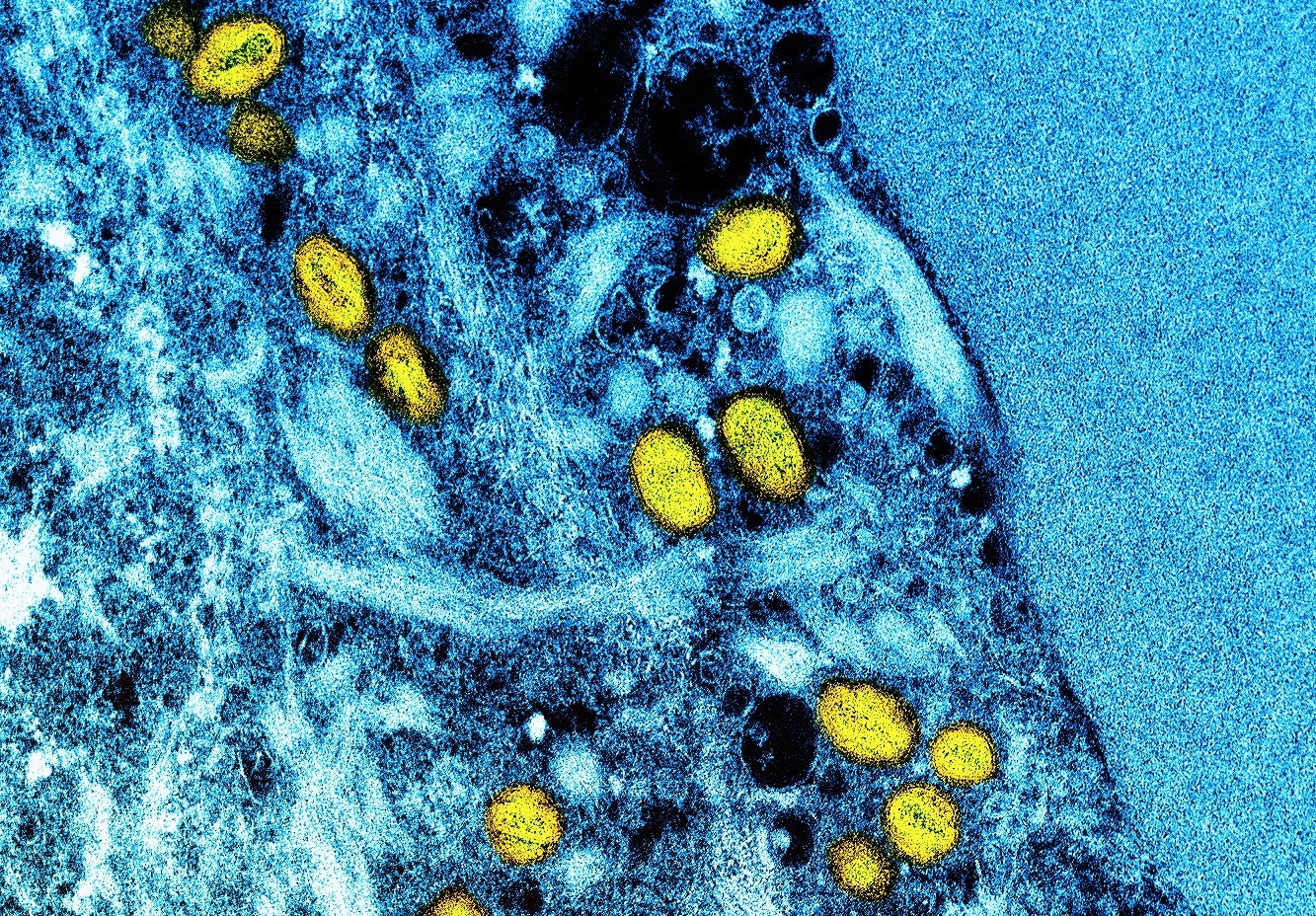In a recent study published in the journal Clinical Infectious Diseases, researchers evaluated the accuracy of patient-collected samples in diagnosing monkeypox virus infections.
 Study: Evaluating the accuracy of self-collected swabs for the diagnosis of monkeypox. Image Credit: NIAID
Study: Evaluating the accuracy of self-collected swabs for the diagnosis of monkeypox. Image Credit: NIAID
Background
The 2022 monkeypox virus (MPXV) outbreak has been highly dissimilar to past ones, especially as sex appears to be the primary driver of viral transmission. Individuals infected during 2022 have been predominantly men who have sex with men (MSM), typically presenting with a high frequency of skin lesions in the genital, peri-anal, and perioral regions. Additionally, many cases have shown to suffer from proctitis, tonsilitis, and penile edema.
Reverse transcription-polymerase chain reaction (RT-PCR) test detecting MXV deoxyribonucleic acid (DNA) shows the best results with skin lesion samples. However, RT-PCT testing has also detected MPXV in oropharyngeal, rectal swabs, and blood samples of infected patients.
More recently, self-sampling has shown promise as a reliable viral detection strategy. Judging from the successful use of self-sampling in detecting severe acute respiratory syndrome coronavirus 2 (SARS-CoV-2) by RT-PCR, researchers tested the performance of this strategy in the MPXV setting.
About the study
In the present study, researchers examined skin lesions, oropharyngeal, and rectal swabs of 50 individuals enrolled in a study of monkeypox viral dynamics in three medical centers in Spain. These individuals had lesions suggestive of monkeypox infection and compatible symptoms starting within the ten days preceding the screening.
Following enrollment, a dermatologist or a specialist in sexually transmitted diseases thoroughly assessed their medical condition using a standardized protocol. Finally, the team invited those participants to participate in the study who passed the clinical assessment criteria. On study day 0 (baseline), a clinician collected clinical samples, including lesion, oropharyngeal, and rectal swabs as appropriate (physician-collected samples).
Simultaneously, they provided the participants with Dacron-tipped swabs, pre-labeled swab containers, and a mailing envelope (home testing kit). The team instructed all the participants to keep samples at 4ºC after collection before transferring them to the microbiology laboratory in Badalona, Spain, via a courier service. Here, the researchers analyzed all the received samples for MPXV DNA detection by quantitative RT-PCR.
Study findings
All 50 patients who participated in the study were male, with a median age of 33.5 years. In addition, all these patients had RT-PCR-confirmed monkeypox infection in at least one of the diagnostic specimens collected. At baseline, physician-collected samples had 49, 38, and 11 MPXV-positive swabs from a skin lesion, oropharyngeal, and rectal swabs, respectively. The researchers noted the highest overall agreement of 98% between physician- and self-collected swabs from skin lesions. The same agreement was 79% and 90% for oropharyngeal and rectal swab samples.
Oropharyngeal swabs appeared more prone to variations because they are less pronounced (or visible) than skin lesions or rectal swabs. Fluctuations in viral load within the oropharynx are also possible. The mean cycle threshold (CT) values of physician- and self-collected skin lesion, oropharyngeal, and rectal swab samples were 22.5 and 23.6, 33.5 and 33.6, and 25.8 and 24.6, respectively. Thus, the CT values appeared comparable between physician- and self-collected skin lesion and oropharyngeal swab samples. Also, these changes likely represented variations in sampling rather than changes in viral load.
Conclusion
Clinicians do not rely on the patient or self-collected skin swabs for routine diagnosis of common blistering skin diseases, such as herpes or Varicella. However, the current study results demonstrated that the performance of self-collected samples in diagnosing MPXV infection was similar to that of physician-collected skin lesion, oropharyngeal, and rectal swab samples. Overall, this method demonstrated remarkable accuracy in diagnosing MPXV using self-collected samples.
- Maria Ubals, MD, Eloy José Tarín-Vicente, MD, Xènia Oller, MD, Adrià Mendoza, MD, Andrea Alemany, MD, Águeda Hernández-Rodríguez, PhD, Cristina Casañ, PhD, Ángel Rivero, MD, Pep Coll, MD, José Miguel Cabrera, MD, Martí Vall, PhD, Manuel Agud-Dios, MD, Elena Gil-Cruz, MD, Alexia Paris de Leon, Aída Ramírez, MD, María Dolores Folgueira, PhD, María Angeles Melendez, PhD, Vira Buhiichyk, Cristina Galván-Casas, MD, Roger Paredes, PhD, Nuria Prat, MD, Maria-Rosa Sala Farre, Josep Maria Bonet-Simó, MD, Pablo L Ortiz-Romero, PhD, Bonaventura Clotet, PhD, Pere-Joan Cardona, PhD, Ignacio Blanco, PhD, Michael Marks, PhD, Clara Suñer, PhD, Oriol Mitjà, PhD, The Movie Group, Evaluating the accuracy of self-collected swabs for the diagnosis of monkeypox, Clinical Infectious Diseases, 2022, DOI: https://doi.org/10.1093/cid/ciac889, https://academic.oup.com/cid/advance-article/doi/10.1093/cid/ciac889/6825269?login=false
Posted in: Medical Research News | Disease/Infection News
Tags: Blood, Coronavirus, CT, Diagnostic, DNA, Edema, Frequency, Herpes, Infectious Diseases, Laboratory, Microbiology, Monkeypox, Polymerase, Polymerase Chain Reaction, Proctitis, Respiratory, SARS, SARS-CoV-2, Severe Acute Respiratory, Severe Acute Respiratory Syndrome, Skin, Syndrome, Transcription, Virus

Written by
Neha Mathur
Neha is a digital marketing professional based in Gurugram, India. She has a Master’s degree from the University of Rajasthan with a specialization in Biotechnology in 2008. She has experience in pre-clinical research as part of her research project in The Department of Toxicology at the prestigious Central Drug Research Institute (CDRI), Lucknow, India. She also holds a certification in C++ programming.
Source: Read Full Article